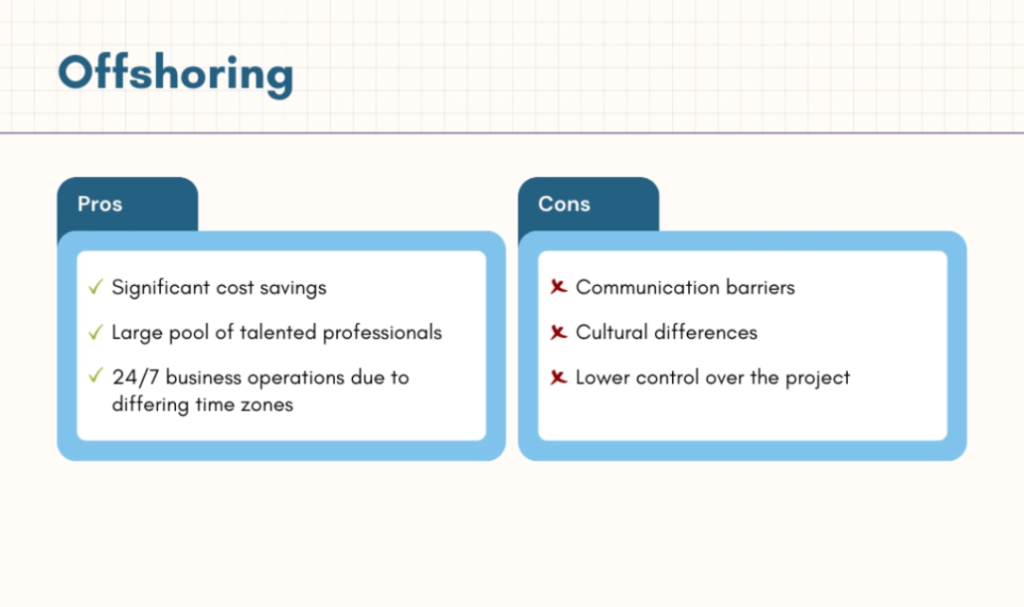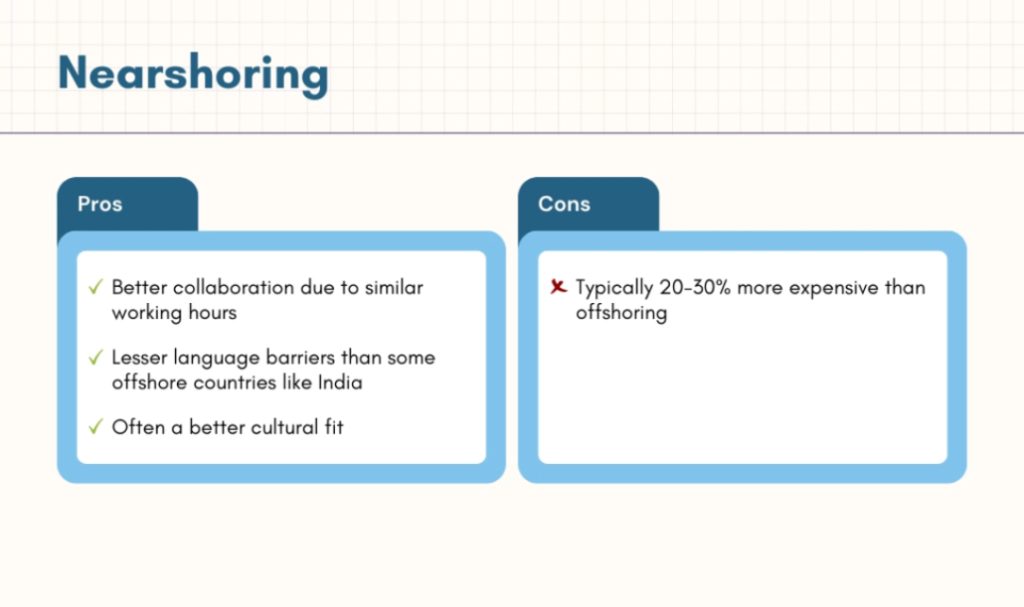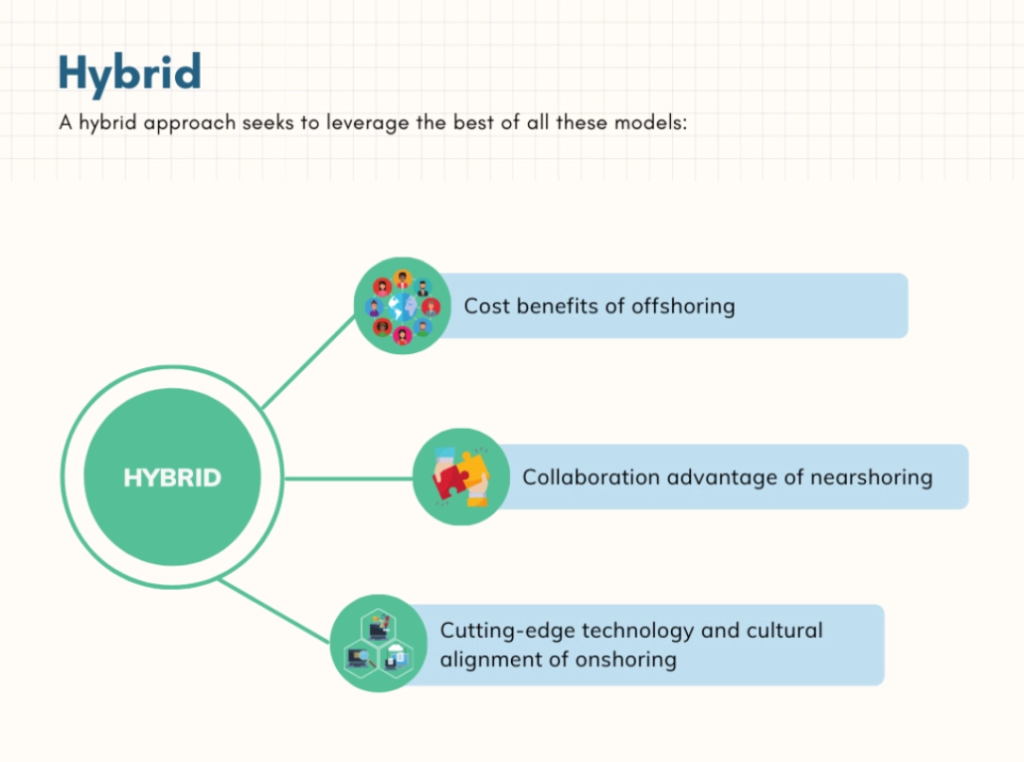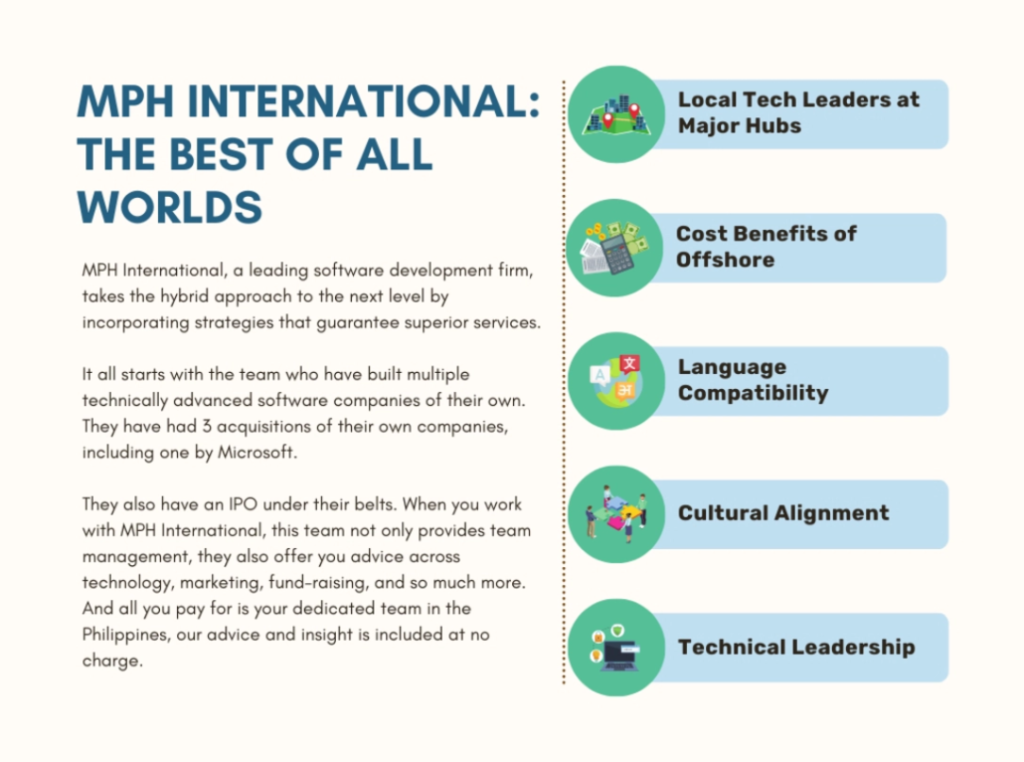Today, in a rapidly globalizing digital economy, businesses are always seeking ways to streamline costs and improve efficiency, while maintaining a high-quality output. One such way is through software development strategies like offshoring, nearshoring, onshoring, and our hybrid model. Let's delve into these concepts and understand their pros and cons.
Offshoring refers to the practice of outsourcing work to a third-party entity in a foreign country, typically in regions where labor costs are lower. This process often involves countries like India, China, the Philippines, and various nations in Eastern Europe.
Many companies have pulled back from China due to geopolitical and intellectual property issues. They have also reduced their presence in Eastern Europe because of the war and higher relative costs. India has challenges of job hopping, as well as language and cultural challenges.
Pros of offshoring include significant cost savings, a large pool of talented professionals, and 24/7 business operations due to differing time zones. However, challenges like communication barriers, cultural differences, and lower control over the project often pose as cons of this approach.

Nearshoring is a derivative of offshoring, where businesses outsource tasks to countries in closer proximity, usually sharing a similar time zone. Countries involved in nearshoring often include Mexico, Canada, and several nations in South America.
The pros of nearshoring include better collaboration due to similar working hours, lesser language barriers than some offshore countries like India, and often a better cultural fit. However, it is typically 20-30% more expensive than offshoring.

Onshoring, or domestic outsourcing, involves outsourcing work to a third-party within the same country. This approach maintains the highest level of control, cultural alignment, and seamless communication.
Onshoring provides exceptional quality and cutting-edge technology but comes at a significantly higher cost due to higher wages and overhead expenses in developed countries; typically 300% - 400% higher costs.

A hybrid approach seeks to leverage the best of all these models:

MPH International, a leading software development firm, takes the hybrid approach to the next level by incorporating strategies that guarantee superior services. It all starts with the team who have built multiple technically advanced software companies of their own. They have had 3 acquisitions of their own companies, including one by Microsoft. They also have an IPO under their belts. When you work with MPH International, this team not only provides team management, they also offer you advice across technology, marketing, fund-raising, and so much more. And all you pay for is your dedicated team in the Philippines, our advice and insight is included at no charge.

Local Tech Leaders at Major Hubs: Our leadership team is spread across Silicon Valley, Seattle, and Houston. We’re in your time zone and happy to engage in anything that will make your efforts more successful.
Cost Benefits of Offshore: While offering the feel of onshore collaboration, MPH maintains the affordability of offshore costs.
Language Compatibility: By building their offshore team in the Philippines, MPH overcomes the language barrier, leveraging the excellent English language skills of the locals.
Cultural Alignment: There are two types of cultural alignments—country culture and company culture. The Philippines' country culture, mirroring the United States', facilitates better communication and understanding. MPH's unique company culture is designed to reflect the vibrant culture of Silicon Valley, fostering open communication, a no-excuses attitude, and a drive for the best solutions.
Technical Leadership: Onshoring often provides access to cutting-edge technologies, considered the gold standard in the industry. MPH’s local leaders actively participate in tech circles, staying updated with technological advances in cloud-native (Kubernetes) micro-services, cybersecurity, AI, AR, Golang, Rust, and more. Most importantly, MPH delivers these cutting-edge services at offshore rates, combining the best of all worlds.
By fusing the benefits of offshoring, nearshoring, and onshoring, MPH International continues to reshape the landscape of software development, promising cost-effective, innovative, and highest-quality solutions.

Subscribe to our newsletter to receive the latest updates and promotions from MPH straight to your inbox.